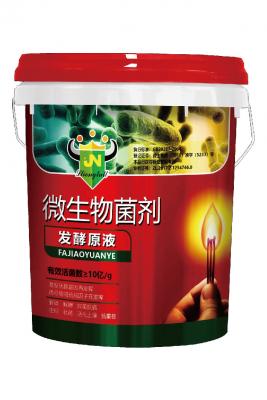What are the main types of bacterial fertilizer? What's the difference between them?
In order to help everyone better understand and use microbial fertilizers, today we will combine common problems and misunderstandings in the use of bacterial fertilizers, and introduce in detail the use skills to improve the effect of bacterial fertilizers in the form of questions and answers.
First, what are the main types of bacterial fertilizer? What's the difference between them?
Bacterial fertilizer, also known as microbial fertilizer, is a common bio-organic fertilizer, compound microbial fertilizer and microbial agent on the market, belonging to the category of bacterial fertilizer. Generally speaking, what we call bacterial fertilizers refers to bio-organic fertilizers and compound microbial fertilizers, and we usually call microbial agents bacterial agents. While all three bacterial fertilizers contain beneficial microbial bacteria, there are some differences between them.
As far as national agricultural standards are concerned, the national agricultural standards for bio-organic fertilizers are NY/T national agricultural standards 798-2015 for NY compound microbial fertilizers in 884-2012, and GB20287-2006 for microbial agents.
In terms of fertilizer formulations that meet the standards, there is only one solid fertilizer for bio-organic fertilizers, and there are two types of compound microbial fertilizers: solid fertilizers and liquid fertilizers. There are three types of microbial agents: liquid, solid (granule) and powder.
In terms of process nutrition, bio-organic fertilizer is composed of beneficial microbial bacteria and animal and plant residues (such as straw, manure, etc.). ) and decomposed organic fertilizer. Fertilizer contains both beneficial microbial bacteria and organic fertilizer, which is a "two-in-one" fertilizer; compound microbial fertilizer is composed of beneficial microbial bacteria and inorganic fertilizers. The fertilizer not only contains beneficial microbial bacteria, but also contains nitrogen, phosphorus, potassium and organic matter. It is a "three-in-one" fertilizer. Microbial bacteria are mainly preparations containing only beneficial microbial active bacteria made through the production, propagation and processing of beneficial microbial bacteria.
In terms of usage and dosage, microbial agents are generally used for field crop spraying, drip irrigation, root watering or pouring of planting holes, and the dosage per mu is generally about 5-10 kg; generally speaking, bio-organic fertilizers and compound microbial fertilizers are mostly used It can be used as base fertilizer or topdressing fertilizer for crops in the field. The amount of bio-organic fertilizer per mu is generally about 150-200 kg, and the amount of compound microbial fertilizer is generally about 50-80 kg per mu. As far as the content of effective active bacteria is concerned, the effective active bacteria content in the microbial agent is 100 million less than that in bio-organic fertilizers and compound microbial fertilizers. Generally speaking, g (granule type), 200 million//g (ml) (liquid type and powder type), the effective live bacteria amount of bio-organic fertilizer is not less than 0.2 billion, the effective live bacteria amount of compound microbial fertilizer is not less than 0.2 billion/g (solid type), 0.5 billion/ml (liquid form) ).




